


|

|
October 2016 |
|
News & EventsGeneral Meeting - Tuesday, October 11, 2016Rob Paull and Ozzie Ozefovitch
“Point Mountain, Then and Now” is a presentation chronicling the restoration of the Point Mountain stretch of the Musconetcong River in New Jersey. Through the years, the river had become less friendly to trout surviving the seasons. Many areas were too shallow for trout to reside comfortably through the tough summer months and be around to tantalize us the following year. The efforts of CJTU and many others allowed a major restoration project to take place in 2015. The stream was reconfigured to include many deep pools, runs, boulders, widening, and bank stabilization. It now allows for holdover fish to comfortably reside and tempt our flies in the future. 
Rob Paull has been an avid fly fisherman, fly tyer, nature photographer, field recordist among numerous other hobbies since childhood. He is a life member of Trout Unlimited. He has traveled throughout the country fishing in Montana, Idaho, Colorado, New Mexico, Washington, and Alaska. He has given presentations on his trips to Alaska and the Snake River in Idaho. When he is outside of his Dermatology office, he can be found on a golf course, enjoying classical and jazz music, recording classical music for the Garden State Philharmonic and Livingston Symphony Orchestras, or enjoying a good pipe or cigar. 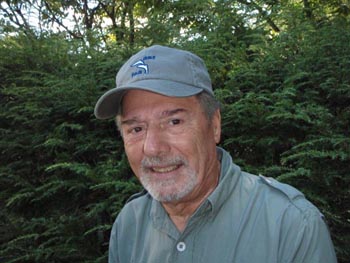
Ozzie has spent considerable time volunteering with the Central Jersey Trout Unlimited chapter where he serves on the Board of Directors and is the coordinator for the Trout in the Classroom program. Over the years he has worked with the NJ Division of Fish and Wildlife by being involved in K-12 education programs, stream restoration projects and stream surveys. In the late 90’s Ozzie combined his love of trout with a lifelong interest in movie making. He has produced a series of underwater videos exploring how trout feed, spawn and behave in streams and rivers. Dvd trailers can be seen on www.underwateroz.com He presents his many video programs at the Fly Fishing Shows, Trout Unlimited Chapters, and other venues throughout the states. American Legion Hall
|
LL Bean Partnership
This is a new venue for us and LL Bean is excited in developing additional programs in the up-coming months. Our next program at LL Bean is October 15th and 16th from 11am – 5pm. where we will be tying flies and if conditions permit giving some fly-casting instruction. On October 1st and 2nd George, Bart and Lou set-up CJTU’s banner and demonstrated how to tie Woolly Buggers and promote the chapter. 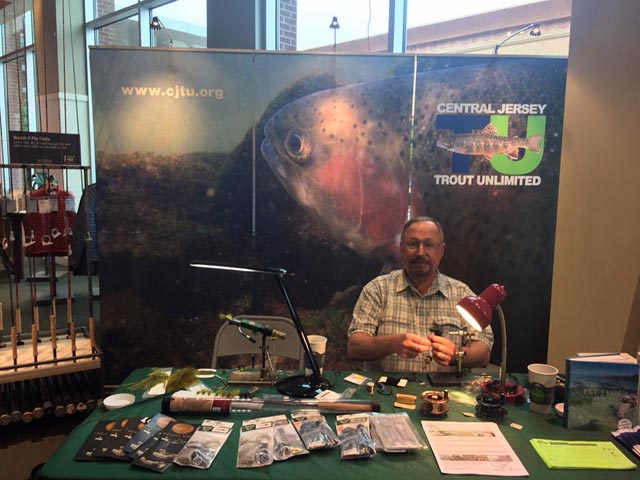
Pequest Fly CastingOn Sunday September 25, 2016 CJTU members provided fly-casting instruction at the Pequest Trout Hatchery. CJTU members who are also WCC volunteers instructed 8 students on the basic roll cast and over hand cast. First Ozzie gave his introduction on the course, and then I reviewed the mechanics and basic casts. Next students paired off with instructors for some one-on-one instruction on the lawn. After the instructor felt the student was ready they tied on a fly and headed to the pond. At the pond students refined their cast stroke and had the opportunity fish and land some nice rainbows. 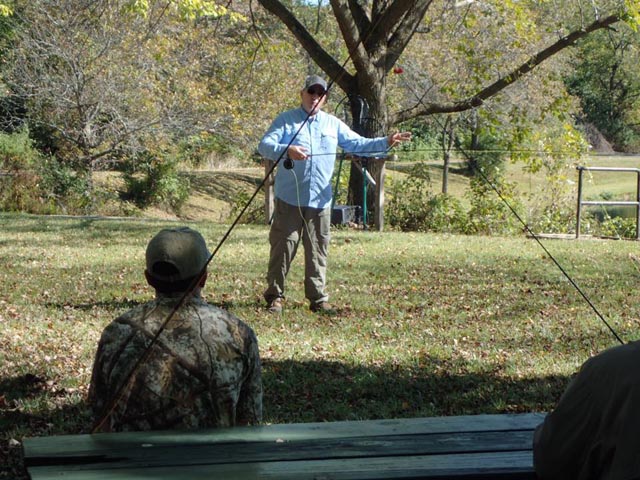
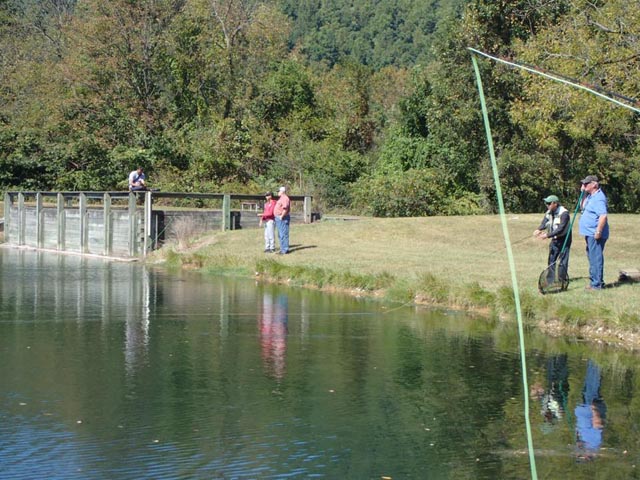
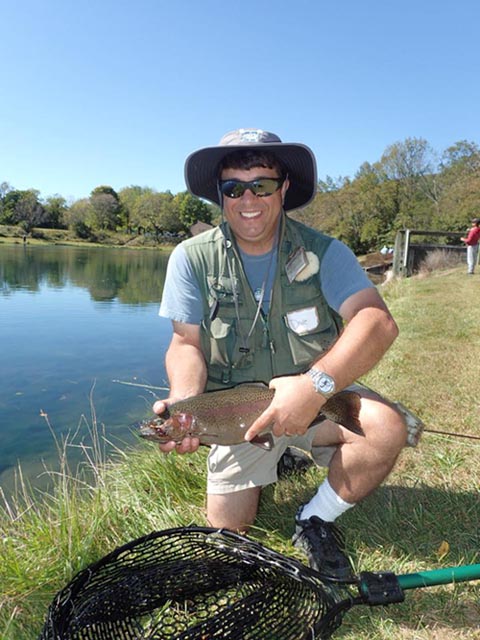
Burnt Mills PreserveCentral Jersey Trout Unlimited is teamed up with the Raritan Headwaters Association to restore and improve part of the Lamington River at the Burnt Mills Preserve in Branchburg on Friday, September 23rd. We were joined members of Ken Lockwood and Hacklebarney chapters. The work involved identifying and removing invasive brush and plants. We had a good turnout and power tools, which allowed us to finish before lunchtime. The long term project involves removing the old mill dam, stream-bank stabilization and improving fish habitat, flood control and better access for recreation. Lou DiGena 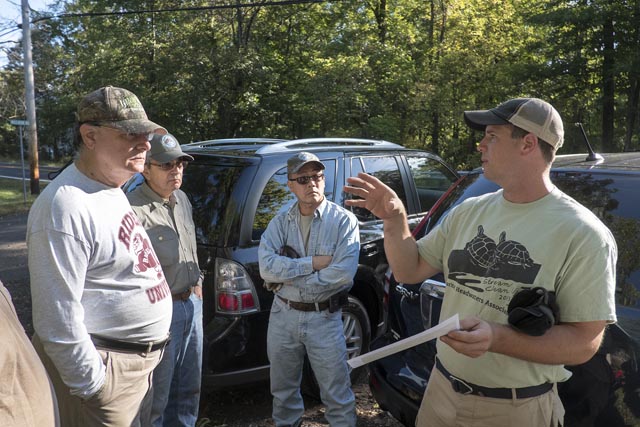
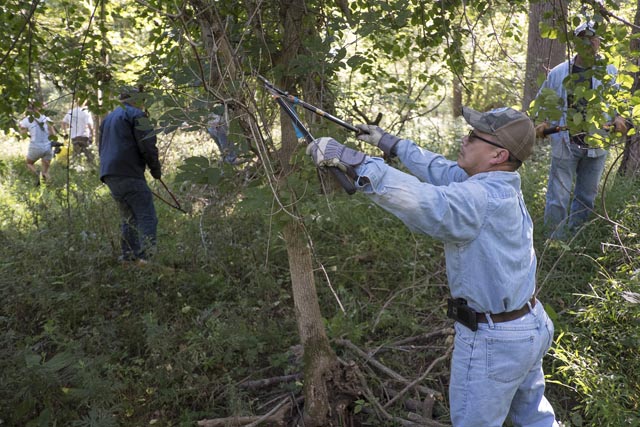
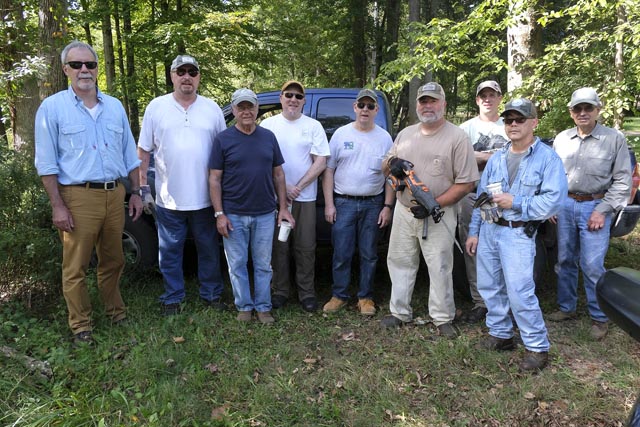
Photo Credit: Nick Romanenko |
President’s LetterOctober 2016I'm filling in for our new president this month. George is up on the Farmington River as I write this. I spoke with him yesterday and he advised the water was very low but there were fish to be had. Our situation here in New Jersey is pretty much the same. Our streams and rivers broke records this summer for low water. Extreme low water and high temperatures are not a good combination for trout. Unfortunately the recent rains did little to alleviate the situation. Hopefully the next weather system will bring a little more water. The State of New Jersey is scheduled to begin its fall stocking program next week. I don't know if the current conditions will impact that date in anyway. My recommendation would be to check fish and wildlife's website for the latest information. This September was one of the busiest on record for us. We kicked off the fall with a stream improvement project on the Burnt Mills Track of the Lamington River. Members of our chapter, along with folks from the Raritan Headwaters association and the Hacklebarney and Ken Lockwood TU chapters, participated in an invasive plant species removal effort. The team of volunteers scoured the flood plain looking for invasive plant species and removed them. There will be more work on this stream in the future, as we move closer to the dam removal and riverbed restoration planned at the site. We also conducted our second fly casting class of the year at the Pequest Hatchery. We had a good turn out and some good fish were caught during the fishing phase of the class. I understand that our new president caught a monster rainbow trout. If you see him ask him to show you a picture. CJTU has entered into a partnership with LL Bean in Freehold, NJ. Our members were in the store a few times last month giving fly casting and tenkara lessons. We will be there on two weekends in October tying flies. The next date is October 15 and 16, if you in the area stop by and say hello. We are excited too see what the future brings, as we have some more projects in the works with them. On Saturday October 8th, CJTU and the folks over at Duke Farms in Hillsborough will be conducting a one day beginners fly tying course. For more information on the course and to sign up, visit www.dukefarms.org/publicprograms. The cost is twenty dollars a person. We are making major changes to our own fly class for next year. We plan on making changes to the schedule to make it more accommodating to learning as well as providing quality tools and materials. This means as a beginner, all you need to do is show up and let us teach you. After the course you will have the knowledge to go out and buy your own equipment with confidence. Tentative dates are Wednesday evenings during the months of February and March. We will provide more details as we get closer. The Fly Fisherman of the Year event and the NJ State Council Banquet is on Saturday, October 29th at the Raritan Inn. Both events are a lot of fun and if you have never attended you should consider it. Tickets for the banquet are being sold through Shannon's Fly Shop www.shannonsflytackle.com. On a sad note, long time supporters of the chapter, Efingers Sporting Goods is closing their doors. There is a liquidation sale taking place right now. There are some good bargains to be had so pay them one last visit. I want to take this opportunity to thank them for the decades of support. Best of luck to all of our friends there who have suddenly found themselves without a job.
Tight Lines |
Central Jersey GossipGeorge HryvniakOn Sunday, September 25, 8 members of the Chapter taught fly fishing to students at the Pequest Hatchery's Education Center. After 2 hours of lecture and casting instruction, the Chapter members took their students to the Education Pond. At the pond the students, with the assistance of their instructors, tried their luck at catching fish with what they had just learned. Ozzie Ozefovich was one of the instructors and his student was his niece, Amy Gable, who he invited down from the Poconos. Amy, who has spin fished from Maine to Florida, wanted to learn how to fly fish. Who better to ask than her uncle Ozzie. Amy, who previously managed Kittatinny Canoes just returned from working with a Florida guide and fishing the St Johns River. She is now working on her Captain's license. While Ozzie taught her, she found it necessary to work in between on her smartphone, as do most young millennial professionals. Despite her need to squeeze in some work she learned her fly-fishing lessons well. After an unsuccessful hour or so on the pond using a variety of flies, Ozzie had her tie on an egg pattern. Using egg patterns she caught and released several nice rainbows. The largest, a twenty plus inch rainbow pictured here. It looks like Amy may have hooked a few trout, but I think those trout hooked Amy on the art of fly fishing. 
Tom Melville and his son headed out to Montana this past June on the annual Tight Lines Fly Shop Montana trip. When they flew into Missoula they lodged at the Double Tree. The next day they headed to the South Branch of the Clark Fork on a float trip. Tom caught between 15 and 20 fish consisting of rainbows, cuttbows, and cutthroats. They were all 12" to 16". The next day they floated a different section of the river. He had another 15 to 20 fish day with largest being 18 1/2". On the third day they headed to the Bitterroot River in search of browns. They spent considerable time waiting for a hatch to bring up the browns, but it never materialized. As a result, he settled for catching 7 or eight rainbows that day. The next day they headed home. A fellow can't find a better way to spend three days in June than on the water with his son in Montana! Bob Machemer fished a couple weeks ago in the Northern Adirondacks. He tried fishing the Ausable but the river was very low and the fish were concentrated in pools. The water temperature was fine for fishing but it wasn't much fun. He chose to spend his time on the Chateaugay River. Bob fished his go to fly which is called "The Musky" since it's tied with all gray muskrat. The name of the fly stands alone and there is no connection with the name of the fly and to our Musconetcong River. Bob ties a variation he call "The Blue Musky". He ties his version using blue thread, blue tinsel ribbing, and a silver bead heah in size #10. The day he spent on the Chateaugay he caught sixteen fish both browns and rainbows. Bob told me the rainbows are stocked but all the browns are native. His largest fish that day was a 16" brown which gave him a tremendous fight since he was wild. Now I would have to say that's a nice way to spend a mid-September day! BTW, Bob told me his Blue Musky really produces on our South Branch and our Musky. Bill Ninke spent three days this past June on the Missouri River. The major hatch at the time was Pale Morning Duns. The river is extremely challenging and you had to use 12' leaders with 3' of 5X tippet. He also said that you must present the fly down and across the river so the fish doesn't see the leader. (That sounds exactly like what's required to succeed at the West Branch of the Delaware.) Bill did very well with a new pattern he developed. Bill was fortunate and hooked and landed four or five rainbows over 20". He also caught a good number of smaller fish. It was a bittersweet trip since he attended a memorial service for a long time friend and guide, Gary Fritz. Bill knew and fished with Gary for over twenty two years.
Until next month, Good Fishing, |
Fly of the MonthAn Updated and Expanded Fly of the Month ProgramOur Chapter has many excellent tiers who produce a wide variety of productive flies for use in fresh and salt waters. The sets of flies submitted to the Fly Swaps for the last three seasons confirm this. Yet, submitted flies have not been shared in our Fly of the Month feature in Mainsteam. So a contributor’s thoughts on a fly and specific tying instructions are just lost. We’d like to change this by having one fly submitted in previous Fly Swaps featured as the Fly of the Month. Further, we want not only to publish the description of the fly but to have the contributor tie the fly at the Chapter Meeting for that month. “Sawyer’s Killer Bug ”Tied by Lou DiGena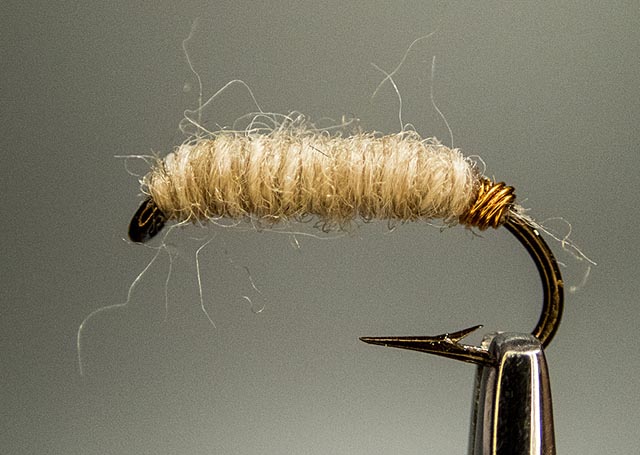 The Sawyer’s Killer Bug is famous in the U.K. and Europe but only recently has this pattern gained a following in the U.S. This fly is famous for its fish catching and the mythological properties of Chadwick’s 477 yarn used in its construction. I became aware of the Killer Bug through English fly tyer and author Oliver Edwards who featured Sawyer’s patterns in his DVD Essential Skills: Search and Sight Fishing released in 2001. Frank Sawyer was a river keeper on the River Avon at Lake in Wiltshire in the U.K. along with being a writer and inventor of such flies as the Pheasant Tail Nymph. Sawyer’s pattern are simple an effective, using in many cases only two materials. In the Killer Bug and Pheasant Tail nymph he used copper wire as the thread and as weight. Both patterns are brilliant in their simplicity and effectiveness. The killer bug was developed by Sawyer’s to manage the grayling numbers on the River Avon. Back then grayling were considered vermin, and gentleman would only angle for trout, never grayling. In alkaline chalk steams one of the main food sources is freshwater shrimp and the Killer Bug was designed to imitate shrimp and scuds. Today in the U.S. it’s an effective imitation for larva (crane and caddis), scuds, cress bugs and shrimp. Originally the Killer Bug was tied with Chadwick's 477 darning wool and reddish brown copper wire. For some, the original Chadwick's 477 wool has mythical fish-catching properties with lengths of the wool selling for hundreds of dollars. Production of the Chadwick’s wool ceased in 1965, which only added to its value. The Killer Bug was name by Sawyer's friend Lee Wulff, but its popularity never quite took in the U.S. By the time I found out about the “Bug” there was no wool to purchase. I was on a mission find a suitable substitute. Veniard’s sells their version wool (Veniard 477) but with out a sample of the genuine article it was nearly impossible to know if it was a good match. My first substitute took the form of a cutting up an old rag wool sweater that was too small, and thaT worked well. Next I found some old craft yarn “Fun with Fibers” that was a viable candidate but was as rare as the Chadwick’s. Then I started to use Patons Classic Wool Natural Mix (00229), which I found at Michael’s. Then I struck gold, one blogger from the U.K. sent me a yard of Chadwick’s 477, now I had the yarn to use as a reference.
Many other bloggers and friends pointed me in the direction of finding a suitable substitute. Chris Swart (TankaraBum), Juan Ramirez (The Hopper Juan), and Jason Klass (Tenkara Talk). The link below is a great reference page on the different yarns and how they look wet and dry.
Here is a list of yarns you can use to tie your killer bug:
Places to purchase these yarns or try your local craft or yarn shop: I will be showing how to tie the Killer Bug before and after the formal meeting and during the break at general meeting 10/11/2016 starting at 6:30pm. Good luck and tie some Killer Bugs for your next fishing adventure. Click here for the recipe! |